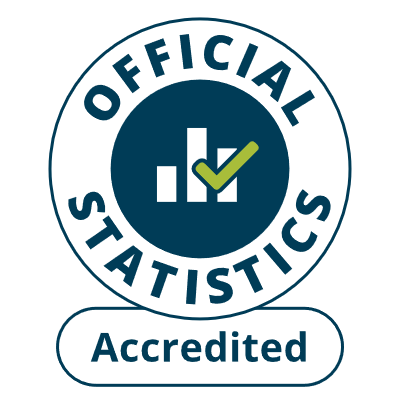
 Migration flows, in thousands, of people between Wales and the rest of the World (Non-UK) by flow and year
Migration flows, in thousands, of people between Wales and the rest of the World (Non-UK) by flow and year
None
|
||||||||||||||||||||||||||||||||||||||||||||||||||||||||||||||||||||||||||||||||||||||||||||||||||||||||||||||||||||||
Metadata
- High level information
- Summary information
- Statistical quality information
- Weblinks
- Keywords
- Open Data
Title
International migration flows between Wales and the rest of the World (non-UK)Last update
January 2015Next update
ONS have discontinued the data for this table, as a more accurate source for estimates has been identified at a regional level. Future updates can be found in the weblinks.Publishing organisation
Welsh GovernmentSource 1
Long-term international migration statistics, Office for National StatisticsContact email
stats.popcensus@gov.walesDesignation
National StatisticsLowest level of geographical disaggregation
WalesGeographical coverage
WalesLanguages covered
English onlyData licensing
You may use and re-use this data free of charge in any format or medium, under the terms of the Open Government License - see http://www.nationalarchives.gov.uk/doc/open-government-licenceGeneral description
This dataset contains information from the Office for National Statistics long-term international migration data for Wales, showing the migrant flows into and out of Wales from outside the UK, and also a net position. The data for Wales are released as part of the series of quarterly migration statistics reports produced by the Office for National Statistics, which provide more detail behind the UK data released earlier in the year.Data collection and calculation
Long term international migration is estimated by combining data from the International Passenger Survey from the Office for National Statistics, Home Office data on asylum seekers and visitor switches with estimates of migration between the Republic of Ireland and Wales from the Irish Labour Force survey.Data are independently rounded to the nearest thousand and may not add or subtract exactly.
For more information please see weblinks.
Frequency of publication
No longer updatedData reference periods
Data are published annually and included here from 1991-1992, with each period's data covering the change from 30 June in the prior year to 30 June in the latter year. The data are usually released as part of the last quarterly migration statistics report of the year.Users, uses and context
The data are used to provide an understanding of the scale of international migration to and from Wales in each year. Further information showing a breakdown into local areas in Wales (but measured slightly differently to allow for the availability of different sources) can be found via the weblinks.More generally migration statistics have a range of uses across the public sector and beyond. For example the Office for National Statistics uses them in population estimates and projections, while wider central government use them to inform policy-making and resource allocation to local authorities, who in turn use the statistics to help estimate the demands on their services – for example, the number of school places required.
Additional users include health bodies who use them to help forecast requirements for health services, particularly for maternity and geriatric services and other providers of service across the public and private sectors such as registered social landlords and housing associations, developers and utility companies, who may use internal migration statistics to predict demand for their respective services in their area.
Other users include academia, who use the data for research and the media may use the statistics to inform articles and debate on migration and related topics.
Rounding applied
Data are independently rounded to the nearest thousand and may not add or subtract exactly.Revisions information
Data have been revised to take account of a review published in April 2014 into issues with long term migration estimates (see weblinks).Statistical quality
See weblinks.Weblinks
Review into the quality of long-term international migration: http://www.ons.gov.uk/ons/rel/migration1/long-term-international-migration/quality-of-long-term-international-migration-estimates-from-2001-to-2011/sty-quality-of-ltim.html; Office for National Statistics data on long-term international migration: http://www.ons.gov.uk/ons/rel/migration1/long-term-international-migration/index.html; International migration data: http://www.ons.gov.uk/ons/taxonomy/index.html?nscl=International+Migration; Local area migration indicators: http://www.ons.gov.uk/ons/taxonomy/index.html?nscl=Local+Area+Migration+Indicators#tab-data-tablesFuture updates will be found here:-
1) Please see table MYE3 within the link below: http://www.ons.gov.uk/ons/rel/pop-estimate/population-estimates-for-uk--england-and-wales--scotland-and-northern-ireland/index.html
2) https://statswales.wales.gov.uk/Catalogue/Population-and-Migration/Population/Components-of-Change








